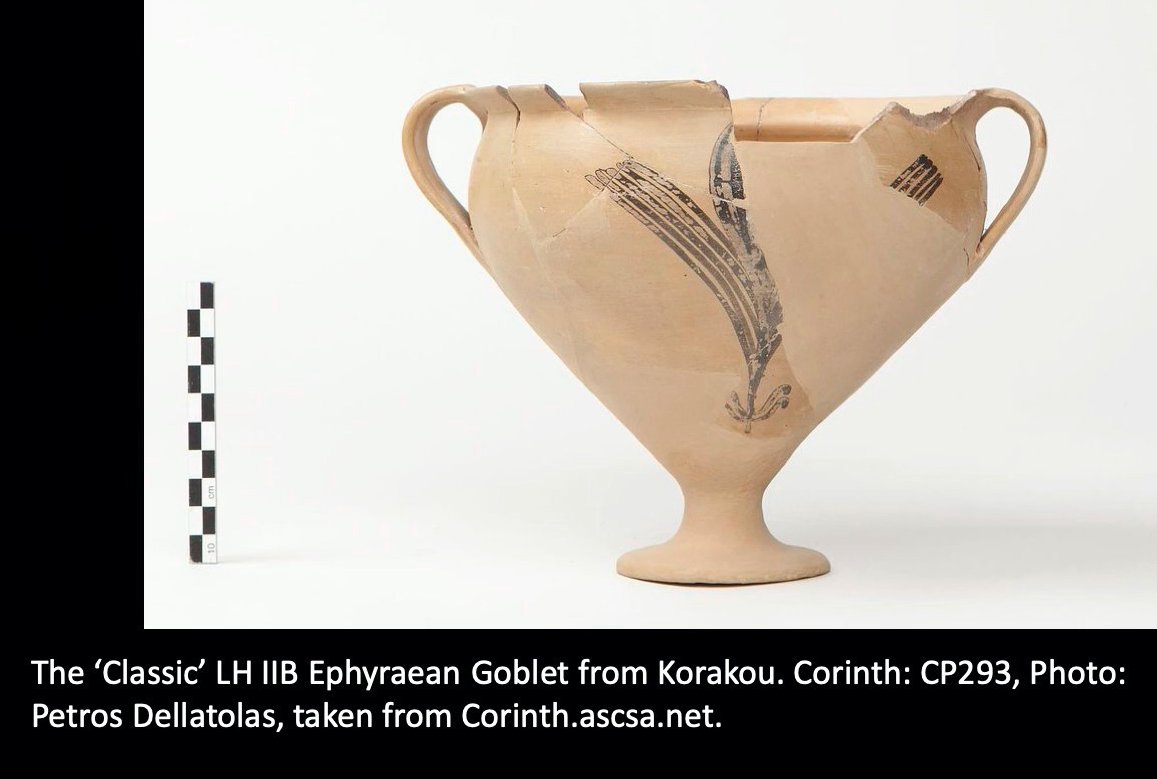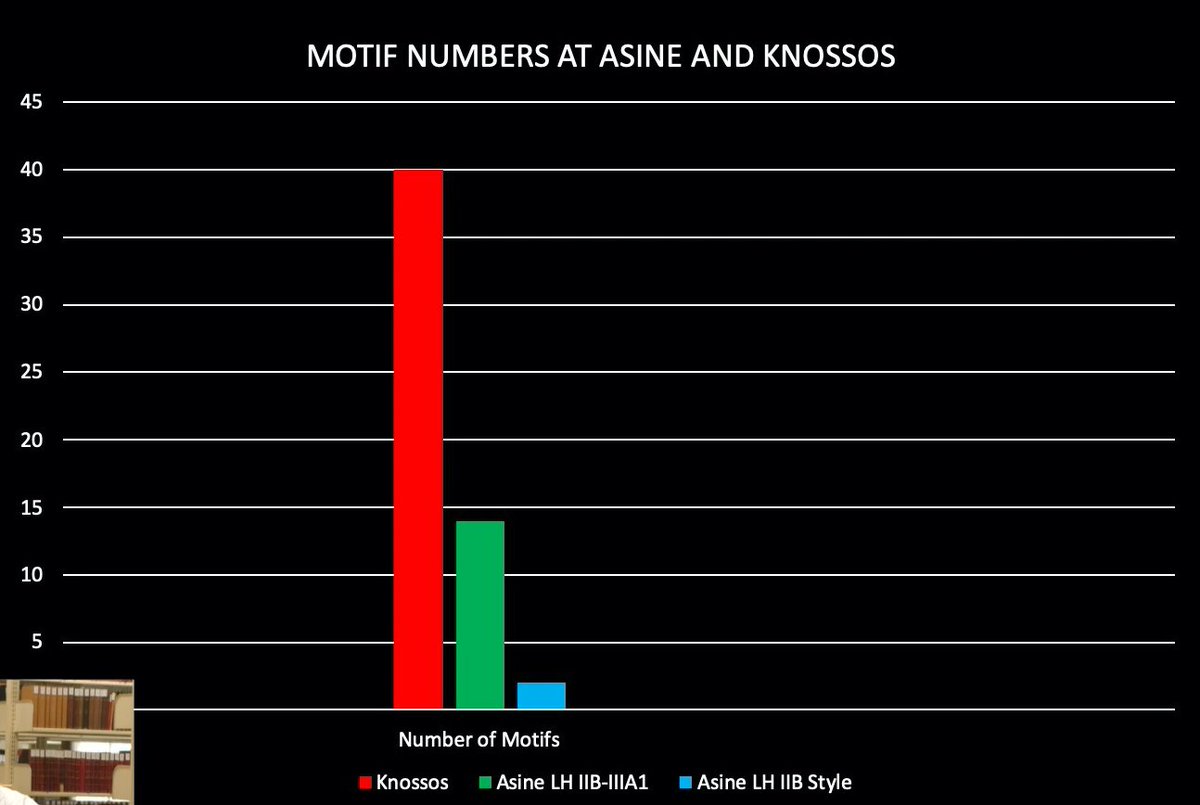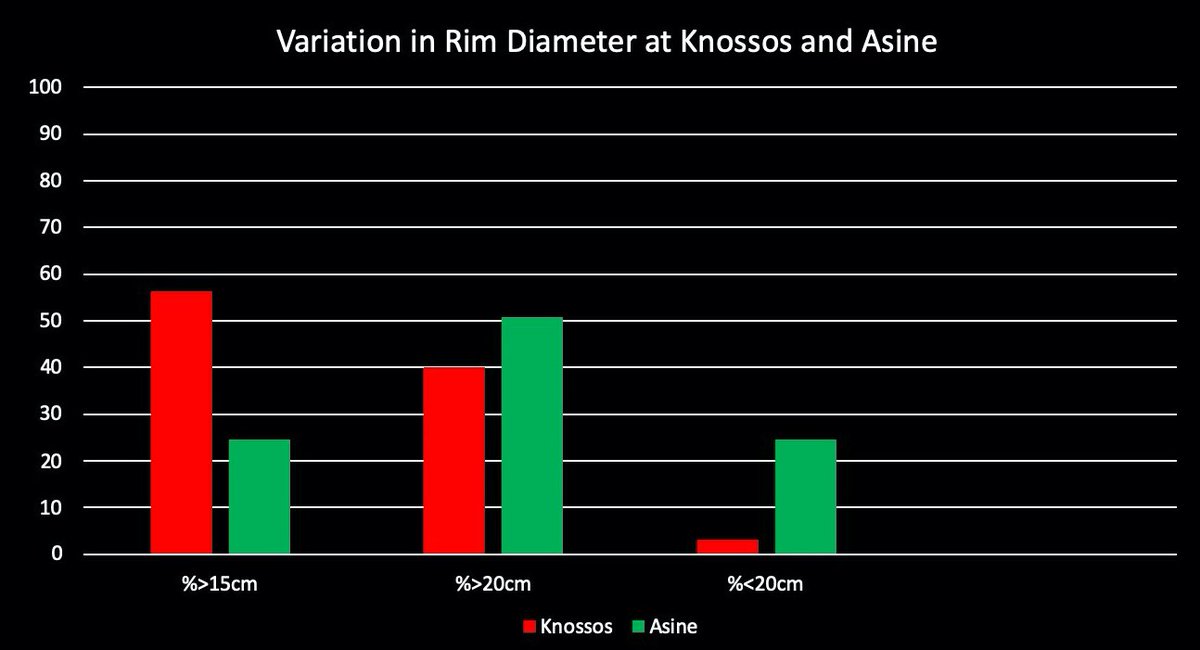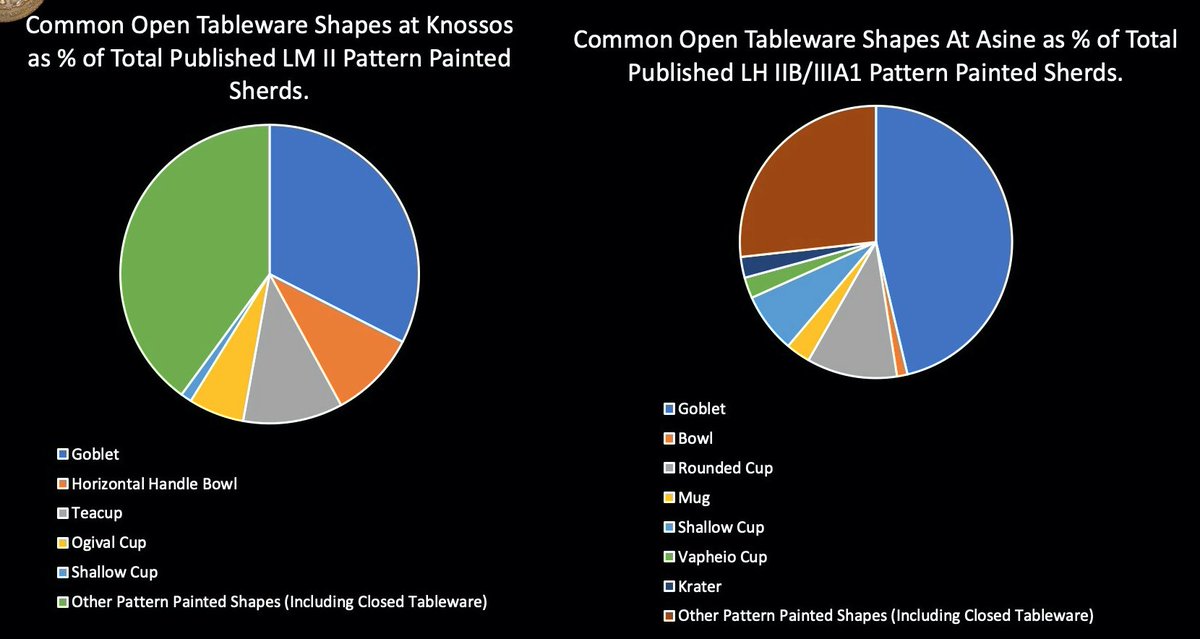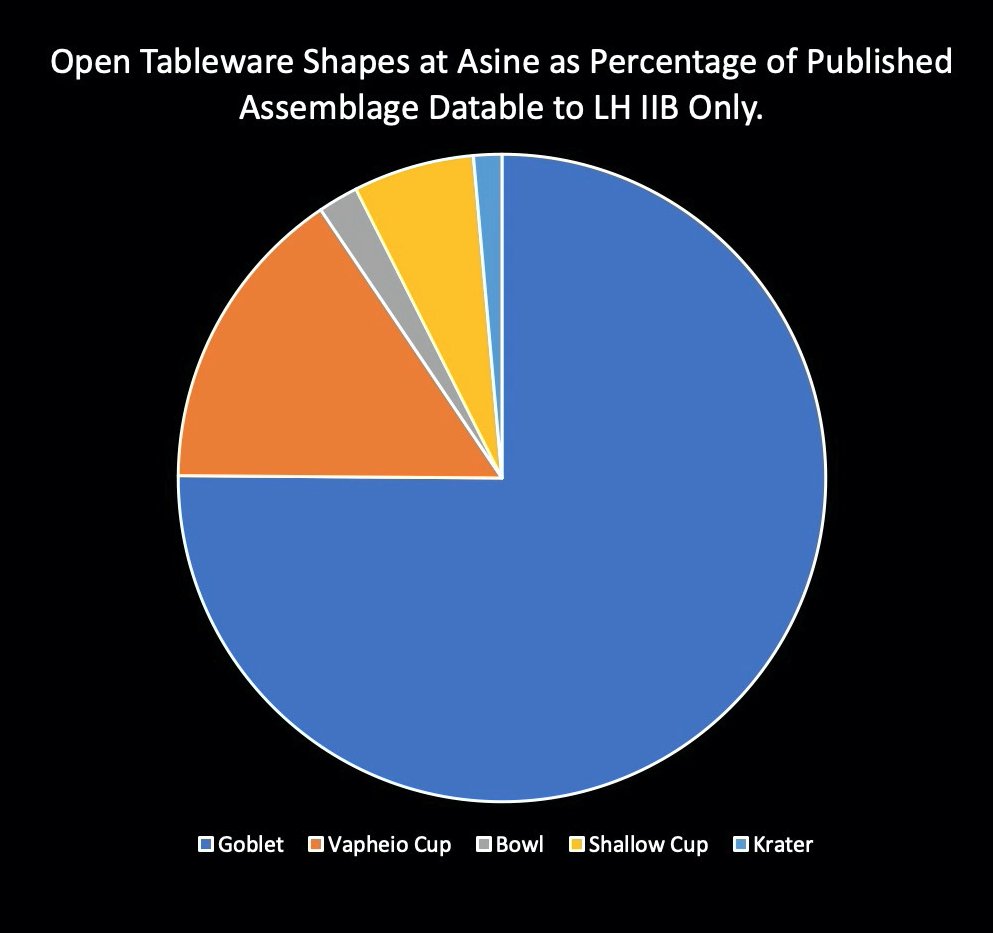#CLST6 #Prehistory For my #CYO1 I chose a video lecture about Late Bronze Age Tableware. In this presentation Charles Sturge discusses how he focuses on broad quantitative and qualitiative changes in tableware to better perform diachronic analyses. /1
As I said before, he analyzes pieces both quantitatively and qualitatively. When looking quantitatively he focuses on volume, diameter, and handle number. For qualitative aspects he looks at the decorative variability as well as shape range. /2
What& #39;s fascinating about his research is that his methodology is different from how other archaeologists would analyze the same pieces. Others usually focus on "typology, chronology, and trade and connection" whereas Strurge focuses on their function. /3
The focus of his lecture is dedicated to the Ephyraean Goblet. This type of goblet has been found in Knossos and is used to argue of Mycenaean invasion in Crete since it seems to be a direct imitation of the goblets found in Asine. Sturge believes though that this is not true. /4
Rather, Sturge sees the goblets in Knossos as more of an adaptation than an imitation or imposition. In order to prove this he focuses on variation in motifs, different rim diameters, and their respective proportion of tableware between Knossos and Asine. /5
As seen in the graph below there are much more motifs found on the goblets in Knossos than the ones in Asine. Considering the few found in Asine, it would not make sense for those at Knossos to create so many goblets to imitate Mainland Greece& #39;s rarely used motifs. /6
The next focus is rim diameter. Based on the 1st graph below it is clear that the rim diameter of the goblets found at Knossos run smaller than ones found at Asine. The 2nd graph also shows that many of the Knossos goblets are of small sizes that didn& #39;t even exist at Asine. /7
This shows two important things. One is that generally they vary in size drastically between the two locations, showing adaptation rather than imitation. The other is that the Knossos goblets were most likely created for a very different consumer and purpose than at Asine. /8
The final variation is in the percentage found of all tableware. At Asine the percentage of tableware that is goblets is ~50% whereas at Knossos it is ~33%. In the 2nd graph, which is just Asine tableware from LH IIB, we see that the percentage that is goblets rises to ~75%. /9
These graphs reveal that the goblet must have played a much larger role in dining at Asine than at Knossos. Once again challenging that Knossos culture is impacted by Mycenaean invasion and that rather it was just local adaptations (1). /10
This video lecture makes me reflect on my #RR4 in which I compared Mycenaean and Minoan pottery from the MBA to the LBA. I had examined how both Minoan and Mycenaean pottery shared similar color schemes and designs and that this might mean one was influenced by the other (2). /11
On further reflection after this video lecture I see it much more as Mycenaean adaptation of the Minoan pottery style than as imitation. The two pieces I examined look very different in shape. One is much rounder than the other and the handles have different heights. /12
Obviously, much more research would be needed than just examining two pieces of pottery to determine for sure if it is adaptation or imitation, but nevertheless this video lecture has left me with more ways to consider tableware. /13
Citations:
(1) https://vimeo.com/428813409
-">https://vimeo.com/428813409... citation one applied to all information provided in tweets 1 through 10.
(2) https://twitter.com/JuliaCLST6/status/1308582816343564288?s=20">https://twitter.com/JuliaCLST...
(1) https://vimeo.com/428813409
-">https://vimeo.com/428813409... citation one applied to all information provided in tweets 1 through 10.
(2) https://twitter.com/JuliaCLST6/status/1308582816343564288?s=20">https://twitter.com/JuliaCLST...

 Read on Twitter
Read on Twitter